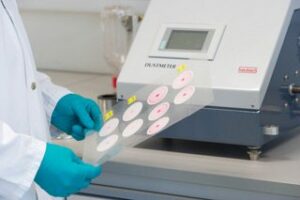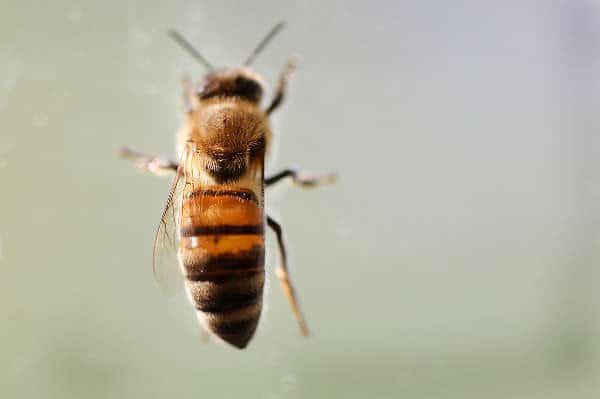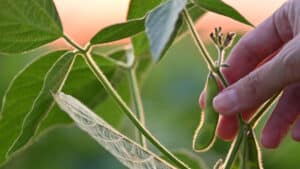Industry combines efforts to reduce dust-off during planting.
As farmers prepare for spring planting, a feeling of anticipation hangs in the air.
What doesn’t hang in the air? Dust-off from seed treatments.
With an increased focus on pollinator health, seed and seed treatment providers, equipment manufacturers, and other industry representatives continue to work together to reduce the amount of dust-off that occurs when handling treated seed.

“Equipment manufacturers like John Deere and crop input companies like Syngenta need to collaborate to meet farmers’ evolving needs,” says Nick Tindall, Senior Director of Government and Industry Relations for the Association of Equipment Manufacturers.
“The whole industry plays an important role when it comes to controlling dust-off,” says Ravi Ramachandran, head of the Syngenta North America Seedcare Institute in Stanton, Minnesota.
The goal is efficiency and safety for both farmers and pollinators.
“Seed treatments pose a minimal risk to pollinators if handled correctly and if stewardship practices are followed. Reducing dust-off is very important not only for the environment but also for product efficacy and minimizing operator exposure,” says Sandy Baker, Seedcare Application Lead, Syngenta.
Dust levels
Seed applied technologies are a crucial pest management tool in modern agriculture and it’s important to have perspective on the actual amount of chemical-related dust that occurs during planting.
“We do follow the European Seed Association established dust-off limits for the main crops as part of our quality assurance program. These limits can be as low as 0.75 grams dust per 100,000 seeds,” says Baker.
Outsiders may envision clouds of chemicals when thinking about dust off, but that’s not accurate.
“The actual amount of dust off we’re talking about is quite small. I’ve seen anti-pesticide activists use videos showing a planter in action and highlight clouds of dust. However, those clouds are plain dirt kicked up by tires and don’t have active ingredients in them,” Tindall says.
In reality, seed treatments are used at very low rates, and in certain crops help eliminate an early foliar insecticide application, resulting in both environmental and economic benefits.

“By investing in formulation innovation and with the expertise from the application specialists at the Seedcare Institute, we are able to deliver high performing, safer to handle products for our growers. Less dust-off means the correct dose of product on the seed and reduced operator exposure,” Ramachandran says.
It also means less potential impact to nearby pollinators, and while it’s always important to communicate planting activities with beekeepers, reducing dust-off is another safeguard toward honey bee health.
Factors to consider
The level of dust that can be generated is linked to the quality of seed treatment products used, how the treatment is applied and the formulation engineering, as well as the level of seed cleaning during processing, moisture level of seeds before treating, and even the environmental conditions at treating.
“At the Seedcare Institute, we develop customized treatment recipes that are tested and calibrated to work across all climatic conditions and through various seed treating equipment,” Ramachandran says.
Once the seed is effectively treated, the equipment itself comes into play.
“We focus on addressing the issue where we have the ability to impact it. That is when the planter is in operation. This is why the industry came together to create an ISO standard to control fugitive dust,” Tindall says.
He believes the ISO standard to control fugitive dust is an impressive example of the industry taking voluntary, proactive steps to address an environmental concern.
“The process involved several manufacturers from across the globe. Our members spent time and resources to change the way they do things to follow the new standard. These adjustments were in place for the 2017 planting season and will have an even greater effect for this year’s planting season,” Tindall says.
Improvements

Baker and Ramachandran agree the progress has been significant.
Another approach to reducing dust-off from treated seeds is by incorporating dust reducing agents like polymers into the slurry mix when treating seeds.
“At the Seedcare Institute, we test and work with the polymer industry to make sure the best products are used in treatment recipes,” Ramachandran says.
Many times, treated seeds actually release less dust-off compared to untreated seeds due to the binding characteristics of the polymers used in the recipes.
Extensive research is carried out to select a specific polymer for a given crop and treatment recipe. “Recent industry innovations include development of engineered seed lubricants that not only reduce dust off from treated seeds by up to 90 percent, but are also applied at a fraction of the traditional lubricant rates. Traditional lubricants like talc and talc-graphite blends are used up to one cup per unit while the new synthetic lubricants are recommended at one or two teaspoons per unit,” Baker says.
Precision planting
On the equipment side, improvements are focused on what happens to any amount of dust as seed flows through the planter while it’s in the field.
“For example, the ISO standard states that the fan exhaust should be half a meter off the ground when in planting position, and it also addresses air speed,” Tindall says.
The potential for dust-off comes from the actual process of planting seed with vacuum meter systems, in which the planters use pressure differential to drive seeds to the ground. This is where the potential impact to nearby pollinators has been most scrutinized.
However, it doesn’t mean there will be dust-off issues at this point in the process.
“That only happens if you have nonoptimized recipes, low quality formulations and poorly cleaned seeds during processing, as well as the lack of seed lubricants during planting to reduce friction on the seeds surface,” Ramachandran says.
It is also important to use the right dose of seed lubricants for planting.
“Overuse of seed lubricants could result in increased dust during planting. Applying at the manufacturer recommended rates will result in not only good seed singulation but also minimal dust-off at planting,” Baker says.
There are other benefits to applying products at the recommended rates, too, like a cost savings.
“Farmers aren’t in the habit of wasting money on inputs. No one benefits when active ingredients miss their mark,” Tindall says. “Beyond economic concerns, seed treatments represent the most environmentally friendly way to use crop protection products, because their application is so finely targeted.”
It’s about sustainability.
“Our customers care a great deal about the health of their ecosystems, as do we. After all, all of our livelihoods depend on it. Doing our part to safeguard pollinator health is a key part of that and a responsibility we take seriously,” Tindall says.












